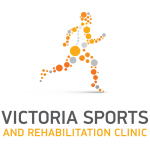Dry Needling therapy began around the early 1900’s but quickly developed as a useful and safe treatment option for patients suffering from both acute and chronic musculoskeletal injuries.
Dry Needling is a technique in relieving pain originating from many sources especially local muscle trigger points also known as Myofascial Trigger Points (MTrP’s).
Placing an acupuncture needle into MTrP’s relieves pain through a number of ways. It causes a change in the neurological feedback to the region, release of endorphins, increases the blood supply to the region & causes relaxation of muscle fibres.
The needles that are used during the treatment are the same that are used during acupuncture. The diameter of the needle is only around 0.30mm (which can fit inside most injection needles or is 10 x the diameter of a human hair). Despite this very narrow gauge, placing a needle into skeletal muscle can disrupt up to 1000 muscle fibres. This disruption causes the normal physiological reaction by the body to repair the damaged tissue and accelerates the body’s physiological response and natural repair mechanisms.
Treatment
Dry Needling is always used as a technique alongside other Osteopathic techniques such as soft tissue and joint stretching and releases and is only used when deemed to be safe to use (much like applying an adjustment or a “click” to a region).
As the needle is inserted it is normal to feel a ‘pin prick’ sensation as it moves through the first few layers of skin and fascia, then should be a deep ache sensation (the same as a deep massage). It is also completely normal to feel referred pain into other regions of the body, which only means it is inserted into a primary MTrP and you will get a great release!
Most patients are surprised with the small amount of pain that is experienced through the treatment. Once the needle is in place sometimes small amounts of rotation and movement are applied to the needle once those fibres are relaxed. Sometimes this can be uncomfortable and it is also common to feel a twitch through the muscle. Because of this patient feedback about pain levels is extremely important and helps guide us to what we can do. Most needles are left in for 3-5 minutes and once ready to remove the needle will glide out easily and can be described as ‘’hollow’ or ‘fluid like’.
There can be anything from 1-20+ needles inserted at a time; it all depends on the patient, injury and pain sensitivity of the patient. It is normal to have some tenderness following the treatment- the same as any normal Osteopathic treatment. There are other side effects that can occur such as bruising, small amounts of bleeding, nausea/drowsiness and sweating (due to the nervous system activation) or rarely local skin inflammation and itchiness (due to local histamine production and increased blood flow). Depending on the location of the injury we would also go through other specific side effects with you before the technique is used so that you are completely aware.
Dry Needling can be applied to most regions of the body when conducted by a fully qualified and trained practitioner. The most common regions and conditions that it is used for are:
- Headaches
- Jaw pain
- Shoulder injuries (such as rotator cuff and postural complaints)
- Low back pain
- Glute/buttocks pain
- Hamstring and Glute tendinopathies
- Knee pain
- Shin splints
- Plantarfascitis
- Tennis/Golfers Elbow
This article is for information only, for a diagnosis and treatment of a musculoskeletal condition consult your Osteopath or primary healthcare professional.
